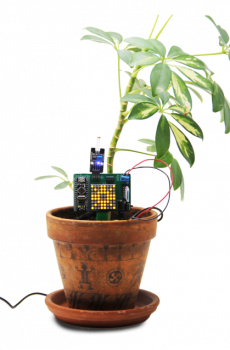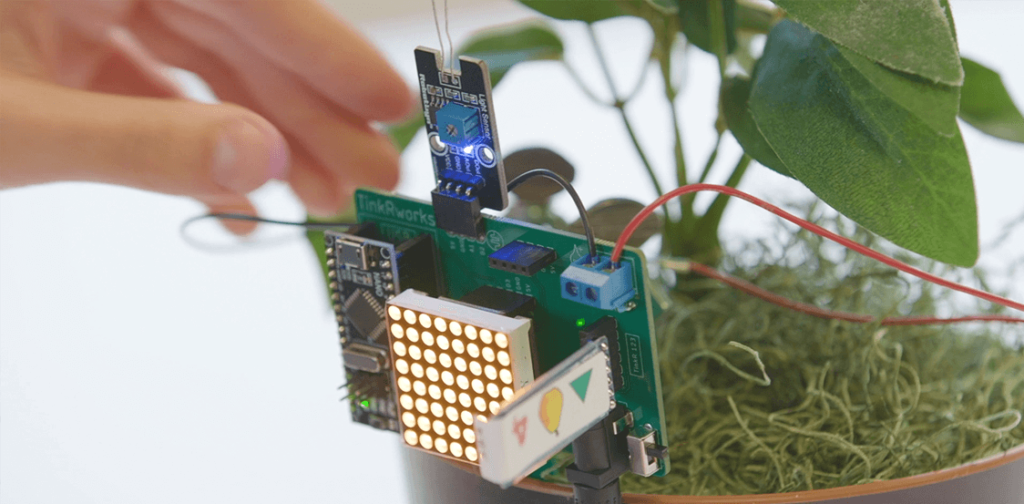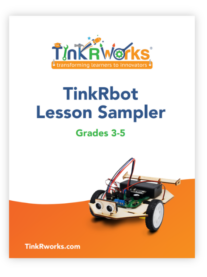
Project Description
Dive into plant science, coding, and art history. Using electronics and programming, students create a customizable plant monitoring system with an animated light display that responds to environmental conditions (soil and light). Along the way, they learn about electronics and how to conduct experiments, gather data, and analyze their findings. Students wrap up the course with a lesson on the history of pot decoration — showing off their creativity with their own artistic designs. Two grade-appropriate versions are available: Grades 2 and 3-5.

Key Concepts
Animation, Binary, Bluetooth, Coding, Fair tests, Fertilize, Indirect light, LED, Moisture, Monitor, Ovule, Photosynthesis, Pistil, Pollen, Pollination, Pollinator, Programming, Reporting, Sensor, Stamen, Symbol
Essential Question
How can we know when a potted plant needs more water or light?
Summary of Standards
Computer Science Teaching Association Standards (CSTA)
Students will use appropriate terminology when describing the components of computing systems, identify and describe patterns in data, and develop programs with sequences and simple loops.
Common Core ELA
Students will learn new content specific vocabulary, participate in collaborative group discussions, and answer questions related to the information that is presented.
Common Core Math
Students will use addition to find the total number of objects.
Next Generation Science Standards (NGSS)
Students will discover the interdependent relationships in ecosystems, ask questions to define problems, analyze and interpret data, and obtain, evaluate, and communicate information.
Texas Essential Knowledge and Skills (TEKS)
Students will use context within and beyond a sentence to determine the meaning of unfamiliar words. They will evaluate details read to determine key ideas, and they will write and solve one-step word problems involving addition and/or subtraction using data represented within pictographs and bar graphs with intervals of one.
Computer Science Teaching Association Standards (CSTA)
Students will describe how internal and external parts of computing devices work together; compare and refine multiple algorithms, create programs that use variable to store and modify data; and create programs that include sequences, events, loops, and conditionals.
Common Core ELA
Students will learn new content specific vocabulary, participate in collaborative group discussions, and determine the main ideas and supporting details of a text.
Common Core Math
Students will interpret products of whole numbers.
Next Generation Science Standards (NGSS)
Students will plan and carry out investigations, analyze and interpret data, describe cause and effect relationships, and use mathematics and computational thinking.
Texas Essential Knowledge and Skills (TEKS)
Students will use context within and beyond a sentence to determine the meaning of unfamiliar words and multiple-meaning words. They will evaluate details read to determine key ideas, and they will solve one-step and two-step problems involving multiplication and/or division.
Learn More
Fill out the form below or schedule a demo to learn more. A School Partner will follow up and help answer any questions.

